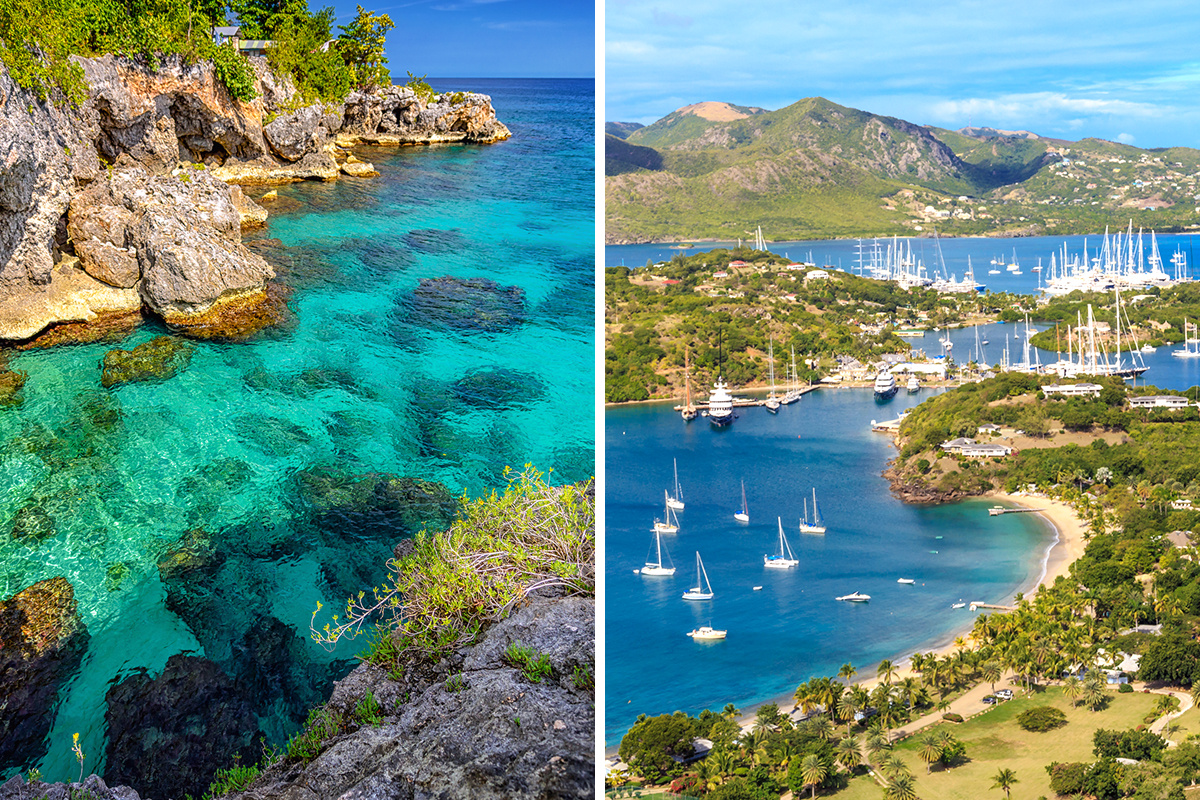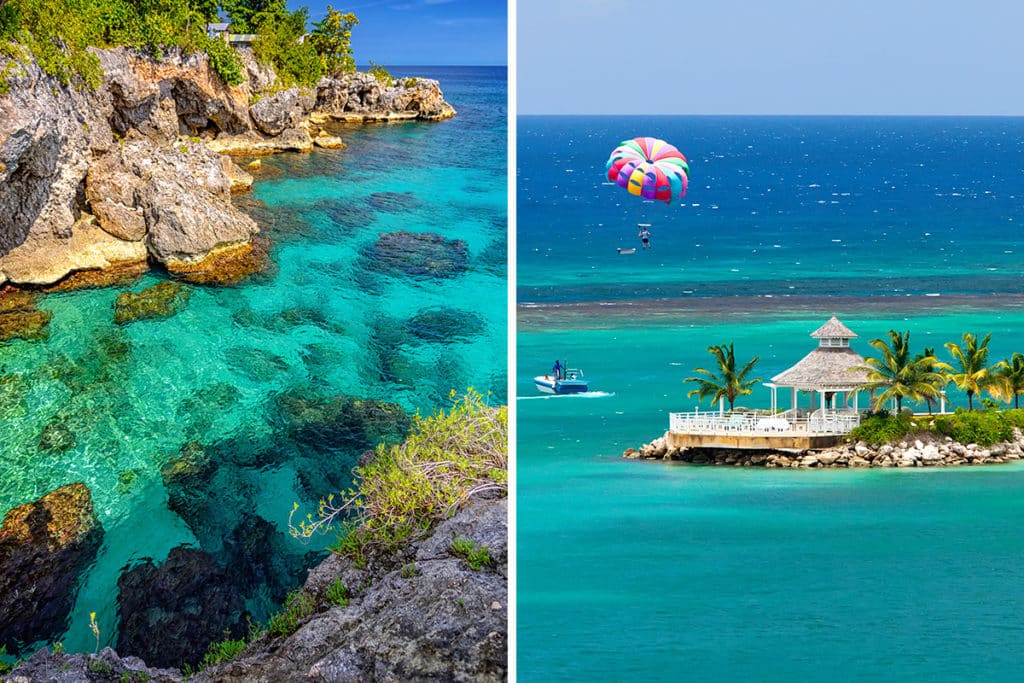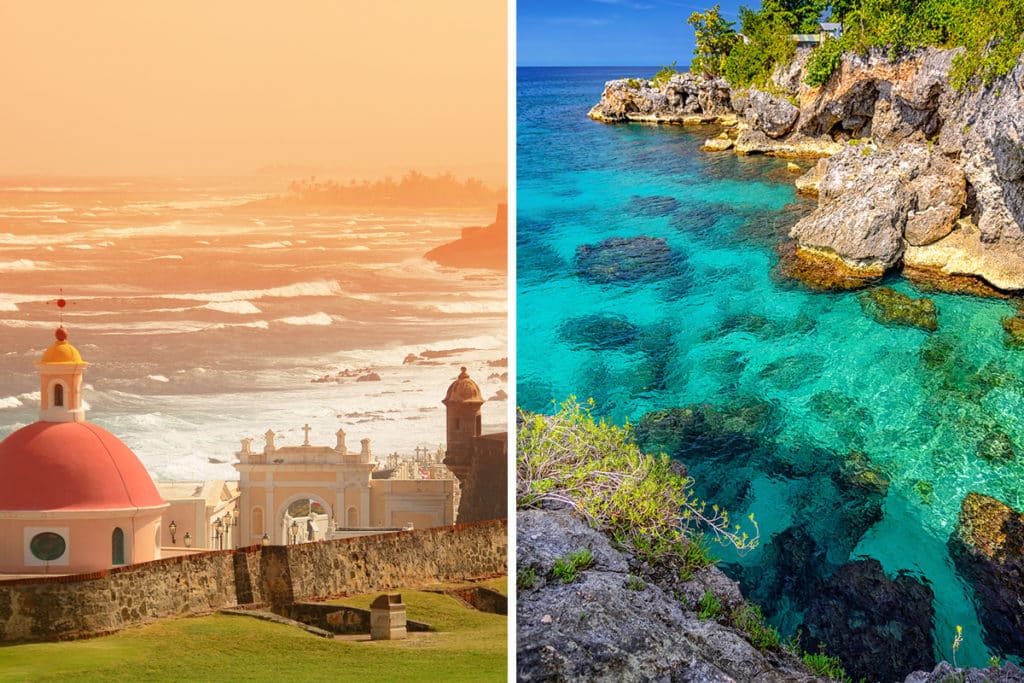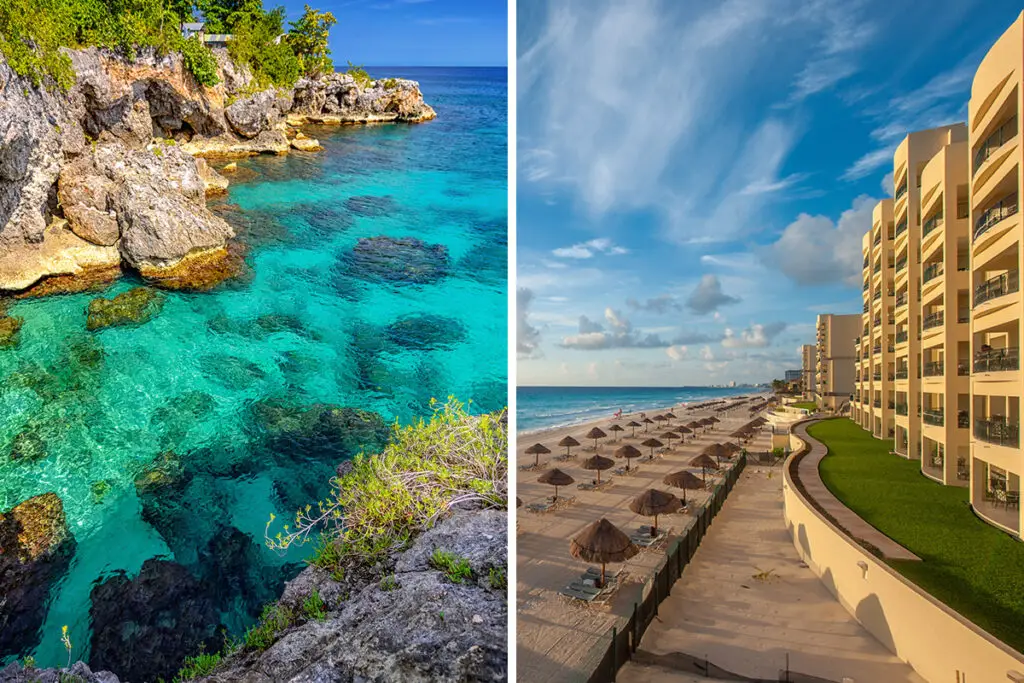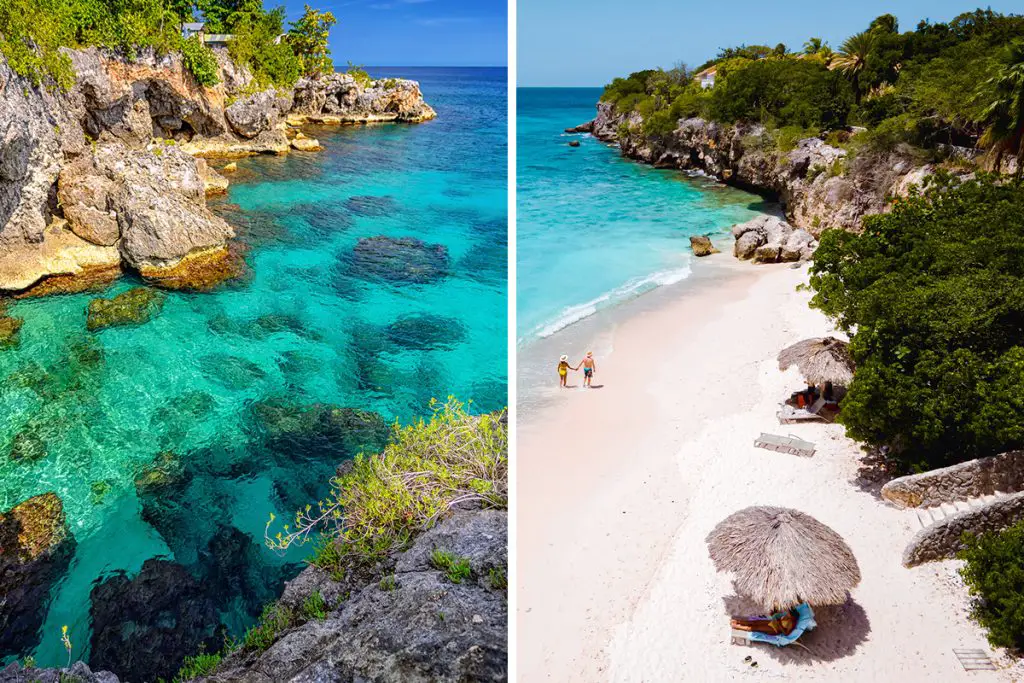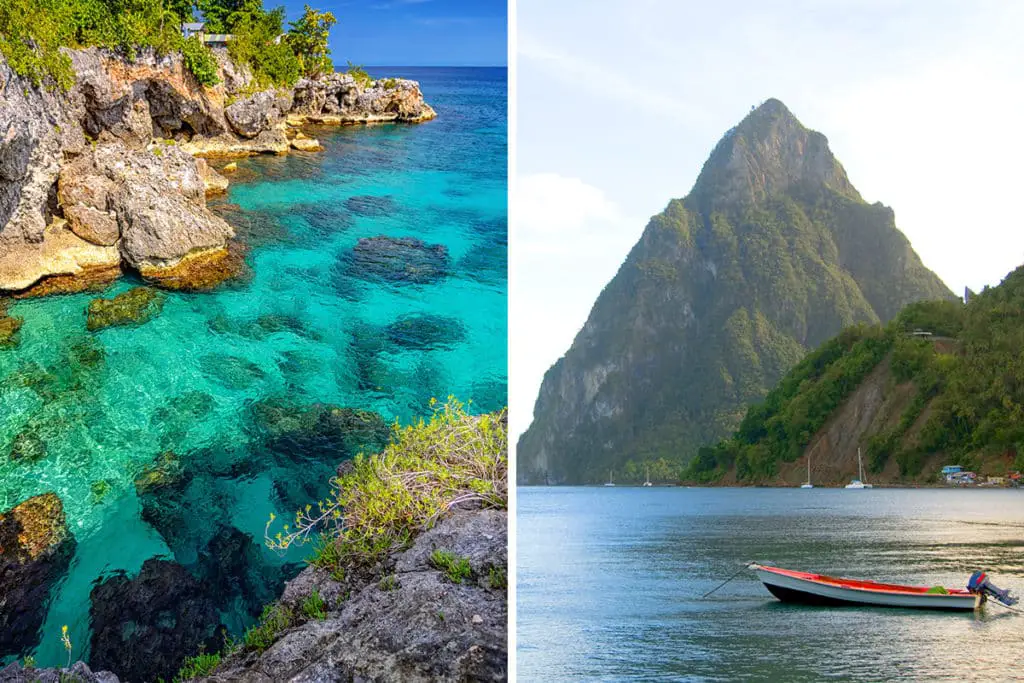You’ve heard the teasers, now it’s time to delve deeper. Each island offers you a treasure trove of experiences waiting to be discovered. Are you ready to explore what sets these destinations apart and find the one that calls to you? Read on.
History & Culture
First things first: history and culture. These topics give you a real sense of a place, don’t they? Well, Jamaica and Antigua have a lot to offer here, and you’ll be amazed at how distinct each island is despite their close geographical proximity.
Jamaica, known worldwide for its reggae music and Rastafarian culture, has a complex history. Its past is a mix of indigenous peoples like the Arawaks and the impact of colonial rule, mainly by the British.
The island became a melting pot of cultures, including African, Indian, and Chinese influences. This blend created a rich tapestry of traditions, art, and music, making Jamaica a vibrant cultural hub in the Caribbean.
On the other hand, Antigua’s history is deeply tied to sailing and the sea. It was a key British naval base in the Caribbean, and its maritime history still echoes in its modern culture. There are forts and historical sites that tell stories of naval battles and pirate lore. So, if you’re keen on maritime history, Antigua offers a different cultural focus compared to Jamaica.
Both islands also have a colonial past that led to their independence: Jamaica in 1962 and Antigua in 1981. Independence Day celebrations on both islands are big events filled with color, music, and dancing, offering a fantastic way for you to immerse yourself in their respective cultures.
However, there’s a clear distinction between the two when it comes to cultural exports. Jamaica is known globally for its contribution to music and sports. Think of icons like Bob Marley and Usain Bolt. Antigua may not have such global recognition, but its sailing and yachting culture is world-class, particularly highlighted during the annual Antigua Sailing Week.
To wrap it up, your choice between Jamaica and Antigua might hinge on what aspect of culture and history resonates more with you. Do you groove to the beat of reggae, or does the call of the sea sing to your soul? Either way, both islands offer a rich cultural backdrop that promises to make your stay unforgettable.
Attractions & Activities
So, you’re the adventurous type, huh? Or maybe you’re a history buff? Either way, you’re in luck because both Jamaica and Antigua have a wide array of attractions and activities to keep you busy. Let’s see what each island has to offer that will tickle your fancy.
Jamaica is a playground for nature lovers and thrill-seekers. One must-visit is Dunn’s River Falls in Ocho Rios, where you can climb up the waterfall or relax in the natural pools.
If you’re into hiking, the Blue Mountains are your go-to. The peak stands at a majestic 2,256 meters (7,402 feet), and the views are absolutely breathtaking. And, if you’re into horseback riding, you’ll love the scenic trails in the Jamaican countryside.
Over in Antigua, the focus is often more on maritime activities, thanks to its sailing heritage. But don’t let that fool you. The island is home to Nelson’s Dockyard National Park, a restored 18th-century dockyard that offers a glimpse into the island’s naval history.
For the adrenaline junkies, zip-lining through the lush Antiguan rainforest is an exhilarating experience you wouldn’t want to miss.
For culture enthusiasts, both islands offer something special. Jamaica has the Bob Marley Museum in Kingston, where you can delve into the life of the reggae legend. Antigua, meanwhile, has Betty’s Hope, a historical sugar plantation that gives you a glimpse into the island’s colonial past.
In summary, both Jamaica and Antigua offer a fantastic range of attractions and activities that cater to various interests. Whether you’re drawn to the natural beauty of Jamaica’s landscapes or you’re keen to explore Antigua’s rich maritime heritage, you won’t be short of things to do. The activities in each destination highlight the unique character of the islands, making either choice an enriching experience.
Beaches
Ah, beaches—the calling cards of any Caribbean vacation. Both Jamaica and Antigua boast some of the world’s most beautiful shorelines. But each has its unique selling points that set them apart.
Jamaica is home to the famous Seven Mile Beach in Negril. With a length of approximately 11 kilometers (around 7 miles), it’s a vast expanse of soft sand and crystal-clear water. On the other side, you have Doctor’s Cave Beach in Montego Bay, smaller at just about 300 meters (about 984 feet) but equally stunning.
Antigua claims to have 365 beaches, one for each day of the year! Two standouts are Dickenson Bay, which stretches for about 1.5 kilometers (approximately 0.9 miles), and Half Moon Bay, roughly 800 meters (around 2,625 feet) long. Both are known for their powdery white sands and turquoise waters.
When it comes to water sports, both islands offer a variety. However, Antigua often gains the upper hand if you’re into sailing and windsurfing. Jamaica, on the other hand, is more suited for activities like snorkeling and scuba diving, thanks to its diverse marine life.
Beach amenities differ too. Jamaican beaches often have more amenities like cafes and rental shops, making your stay super convenient. Antiguan beaches tend to be less commercialized, giving you a more tranquil experience.
In conclusion, both Jamaica and Antigua offer stunning beaches with unique qualities. Jamaica provides a mix of long stretches of sand and more commercialized options, while Antigua gives you a plethora of choices and a peaceful atmosphere. Your ideal beach experience depends on what you’re looking for—either way, you can’t go wrong with either island!
Eating, Drinking & Nightlife
Who doesn’t love good food, a refreshing drink, and a night out on the town? Well, you’ve got two fabulous destinations to pick from: Jamaica and Antigua. Let’s dig into what each island offers to satisfy your gastronomic and nocturnal cravings.
When it comes to eating, Jamaica is a haven for food lovers. Jerk chicken and pork, cooked over pimento wood, is a must-try local delicacy. For seafood fans, roadside shacks selling escovitch fish are a hit.
Antigua, on the other hand, is famous for its “fungie” and pepperpot, a kind of cornmeal pudding with a meat stew. Seafood like conch is also plentiful, often served grilled or in chowders.
Now, let’s talk drinks. Jamaica is the land of rum, with Appleton Estate being one of the oldest distilleries in the country. You also can’t leave without trying a ‘Ting’, a Jamaican grapefruit soda often mixed with rum.
Antigua has its own rum culture too, with Cavalier and English Harbour being local favorites. But what sets Antigua apart is its passion for sailing, reflected in beachside bars that serve up nautical-themed cocktails.
When the sun sets, the nightlife comes alive. In Jamaica, clubs in Kingston and Montego Bay are the places to be, with genres from dancehall to reggae filling the air. Antigua, while a bit quieter, offers a unique experience with its beach bonfires and live Calypso music.
To sum it all up, your choice of eating, drinking, and nightlife experiences will vary significantly depending on whether you choose Jamaica or Antigua. Jamaica offers a vibrant culinary scene with an equally lively nightlife, while Antigua offers a more laid-back, nautical-themed experience. No matter where you go, your taste buds and your dancing feet will thank you!
Shopping
Ready to shop till you drop? Both Jamaica and Antigua offer a variety of shopping experiences, so let’s find out which island will fill your bags and empty your wallet—in a good way, of course!
Jamaica is known for its craft markets, where you can find handmade items like straw hats and wood carvings. Kingston’s Coronation Market is the go-to for fresh produce and local spices, while the upscale shops in Montego Bay offer designer goods and luxury items.
Antigua, on the other hand, shines in duty-free shopping. Heritage Quay in St. John’s is a hub for high-end brands, especially watches and jewelry.
Antigua also has its share of local crafts, particularly at the St. John’s Saturday Market. You’ll find a plethora of items from woven baskets to handmade soaps. Jamaica, meanwhile, has an edge in the variety of its malls and shopping centers, such as the Tropical Plaza and the Sovereign Centre, which feature both local and international brands.
To grab some local flavors, you might want to visit Jamaica’s Scotchies for jerk seasonings or Antigua’s Epicurean Fine Foods & Pharmacy for locally made sauces and spices. Both islands offer a chance to bring home a taste of the Caribbean.
In a nutshell, Jamaica and Antigua offer different but equally rewarding shopping experiences. While Jamaica excels in local crafts and has a greater variety of shopping centers, Antigua is your destination for duty-free and high-end shopping. Either way, you’ll find something that catches your eye and captures the essence of these beautiful islands.
Accommodation
When it comes to relaxing after a day full of adventure or chilling on the beach, the place you lay your head matters. Jamaica and Antigua offer a variety of accommodations to fit every budget and style. Let’s see where you’ll be most comfortable.
Jamaica is known for its all-inclusive resorts, especially in popular areas like Montego Bay and Ocho Rios. These resorts often come with multiple pools, several dining options, and a host of included activities. But if you’re after something more authentic, small guesthouses and Airbnb options are plentiful, especially in places like Negril.
Antigua, on the other hand, leans more towards boutique hotels and smaller resorts. English Harbour offers upscale options like Admiral’s Inn, which has its own marina. If you’re looking for something more budget-friendly, there are various villas and apartments available for rent across the island.
Both islands also offer eco-friendly accommodation options. In Jamaica, you’ll find places like the Kanopi House, a series of treehouses in Port Antonio. Antigua has the Wild Lotus Camp, an oceanfront glamping experience that’s eco-conscious.
In summary, whether you opt for Jamaica’s all-inclusive resorts or Antigua’s boutique hotels, you’re in for a comfortable stay. The choice boils down to the kind of experience you’re looking for: grand and all-encompassing in Jamaica, or intimate and personalized in Antigua.
Family-Friendliness & Children’s Activities
Family vacations are a special kind of adventure, aren’t they? Whether you have toddlers or teenagers, both Jamaica and Antigua have something to keep every family member entertained.
Jamaica offers a range of family-friendly resorts that often include kids’ clubs, water parks, and even nanny services. On the activity front, family river rafting on the Martha Brae River is a hit, and the Mystic Mountain Adventure Park offers sky explorations that are safe for kids.
In Antigua, family-oriented resorts often offer sailing lessons for older kids and snorkeling opportunities for the whole family. The Donkey Sanctuary is a unique outing that’s educational and fun for younger children. Older kids might enjoy exploring the historical forts around the island.
Both islands offer a variety of outdoor activities suitable for families. Jamaica has the Rocklands Bird Sanctuary where kids can feed birds right from their hands. In Antigua, Stingray City allows a shallow water interaction with stingrays, a hit among youngsters.
To wrap it up, both Jamaica and Antigua offer family-friendly accommodations and activities that cater to all ages. Whether it’s adventurous activities or educational outings, you’ll find something to make your family vacation memorable in either destination.
Getting There & Getting Around
Getting to your dream Caribbean destination and moving around once you’re there can set the tone for your entire trip. Both Jamaica and Antigua have their pros and cons when it comes to accessibility and mobility. Let’s dig in.
To get to Jamaica, you’ll most likely fly into one of the two major airports: Norman Manley International Airport in Kingston or Sangster International Airport in Montego Bay. These airports are well-connected with flights from the U.S., Canada, and Europe. Antigua has the V.C. Bird International Airport, also with good connections but generally fewer options than Jamaica.
Once you’re on the island, getting around in Jamaica is often done by taxis or private drivers. Buses are available but are less reliable. If you’re up for it, renting a car is an option but remember that driving is on the left side of the road. In Antigua, public buses are a more reliable option, and taxis are readily available. Again, driving is on the left.
If you’re staying in a resort in either Jamaica or Antigua, shuttles from the airport are often available. The distances from the airport to popular areas like Montego Bay or Ocho Rios in Jamaica can range from 15 kilometers (about 9.3 miles) to 100 kilometers (about 62.1 miles). In Antigua, most resorts are within 20 to 30 kilometers (about 12.4 to 18.6 miles) of the airport.
In summary, getting to and around both Jamaica and Antigua comes with its own sets of conveniences and challenges. While Jamaica offers more international flights, Antigua has a more reliable public transportation system. Either way, both islands make it relatively easy for you to start your Caribbean adventure.
Weather
When planning your vacation, weather can be a deciding factor. Both Jamaica and Antigua offer that dreamy Caribbean climate, but let’s dive into the details to see how they differ throughout the year.
In Jamaica, the weather is generally warm and humid, with temperatures ranging between 75-90°F (24-32°C). The island experiences its dry season from December to April. The wet season runs from May to November, but even then, rain showers are usually short-lived. Hurricanes are most likely between June and September, though they are relatively rare.
Antigua also experiences a tropical climate, but it’s a bit drier. Average temperatures range from 73-87°F (23-31°C). The dry season here is slightly longer, lasting from December to May. Hurricanes are also a concern between June and November, but like Jamaica, they are not frequent occurrences.
Both destinations offer a variety of microclimates due to their diverse landscapes. For example, the Blue Mountains in Jamaica are often cooler, with temperatures sometimes dropping to 60°F (15°C). In Antigua, the winds can be stronger on the eastern side of the island, offering a refreshing break from the heat.
In conclusion, both Jamaica and Antigua offer warm, tropical climates, making them great options for a beach getaway. Jamaica is generally more humid and has a slightly shorter dry season, while Antigua is a bit drier with a longer period of sunshine. Choose according to your own weather preferences!
Safety
Your safety is paramount when you’re on vacation. Both Jamaica and Antigua are generally safe for tourists, but there are some distinctions worth noting.
In Jamaica, petty crime like pickpocketing can happen in busy tourist areas. It’s a good idea to remain aware of your surroundings and keep your valuables secure. Antigua has a lower crime rate compared to Jamaica, but it’s still advisable to exercise caution, especially during the night.
Unique to Jamaica are “no-vending” zones at popular tourist spots, designated to keep aggressive vendors at bay. Antigua doesn’t have this feature, but the island is known for its welcoming locals who respect personal space.
Natural hazards are another concern. In Jamaica, roads can be tricky to navigate, especially in the rural areas. In Antigua, sea currents can sometimes be strong, so always pay attention to local advisories when swimming or snorkeling.
In summary, while both destinations are largely safe for travelers, Jamaica requires a bit more caution due to a higher crime rate. Antigua offers a more relaxed atmosphere but still calls for basic safety measures. Your safety in either destination largely depends on staying aware and taking precautions.
Cost
Planning your budget is a crucial part of any vacation. Let’s compare the costs you can expect when visiting Jamaica or Antigua.
Jamaica offers a wide range of options to fit different budgets. A meal at an average restaurant can cost around 1,500 JMD (about 10 USD). Accommodations can vary greatly, from budget hotels at 60 USD per night to luxury resorts that can go up to 300 USD or more. Local transportation is generally affordable, with taxi fares starting from 150 JMD (about 1 USD).
Antigua is generally more expensive. Meals can cost around 40 Eastern Caribbean Dollars (about 15 USD), and the average hotel room will set you back at least 150 USD per night. If you wish to rent a car, expect prices to start at around 50 USD per day.
Both Jamaica and Antigua offer opportunities to save. In Jamaica, local eateries and public transportation are less expensive options. In Antigua, you could opt for vacation rentals or Airbnb to save on accommodations.
To sum it up, Jamaica tends to be more budget-friendly, offering a wide range of options from budget to luxury. Antigua is generally more expensive, particularly when it comes to dining and accommodation. Your choice will depend on what you’re willing to spend for comfort and convenience.
Which Is Better – Jamaica or Antigua?
Choosing between Jamaica and Antigua for your vacation is a tough call, as both islands have their unique offerings and appeals. This final section will bring all the previously discussed factors together to help you make an informed decision.
For those deeply interested in history and culture, Jamaica may have the edge. With its rich past, Jamaica offers a diversity of experiences and a deeper dive into Caribbean culture. Antigua, while culturally rich, leans more towards a sailing culture and British influences, making it a bit narrower in scope.
When it comes to attractions and activities, both islands have a lot to offer but in different ways. Jamaica provides a broader range of adventure sports, outdoor activities, and natural beauty. Antigua, although smaller, focuses more on water-based activities like sailing and snorkeling.
If you’re a beach enthusiast, both islands have stunning shorelines, but they offer distinct experiences. Jamaica has longer beaches with golden sands, perfect for long walks. Antigua, on the other hand, has 365 beaches, giving you a new experience every day, although they are often smaller in size.
For eating, drinking, and nightlife, Jamaica has a vibrant scene, with a range of options that can fit all kinds of budgets. Antigua, while offering fewer options, provides a more upscale and less crowded experience. Both islands offer excellent local cuisine, but Jamaica gives you more opportunities to eat like a local for less money.
If shopping is a significant aspect of your travel, Jamaica offers more variety and opportunities to purchase local crafts. Antigua has fewer options but offers a selection of luxury goods and locally made crafts that are worth your time and money.
Accommodation options are diverse in both destinations, catering to a wide range of budgets. However, Jamaica tends to be more budget-friendly, whereas Antigua leans towards the upscale end. Similarly, getting there and around is easier and generally cheaper in Jamaica because of its larger size and better public transportation options.
In summary, choose Jamaica if you’re looking for a destination with a rich culture, more activities, and a wide range of options for every budget. Opt for Antigua if you prefer a more laid-back vacation with an emphasis on water activities, beaches, and a generally more upscale experience. Either way, you can’t go wrong; it’s the Caribbean after all!

